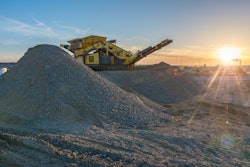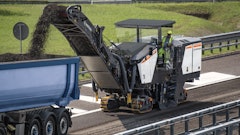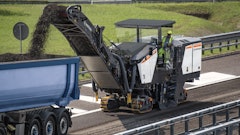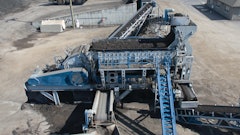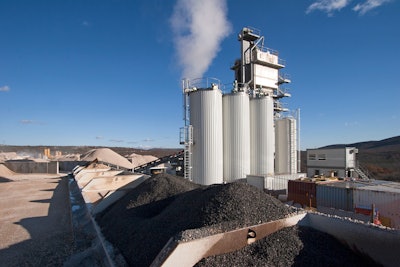
In response to new federal regulations, announced in 2021, the production industry for asphalt pavement pushed forward its "The Road Forward" initiative, with an ambitious goal of net zero greenhouse gas (GHG) emissions by 2050. As part of hitting that target, the National Asphalt Pavement Association (NAPA) reveals a first-of-its-kind inventory of the asphalt mix production process in the United States. The report compiles "cradle-to-gate" emissions data from 2009 to 2019 including upstream raw material from source, the transportation of said materials to the sites of production, and plant emissions (burner fuels included).
"Publishing this report puts NAPA and the asphalt pavement industry at the forefront of transparency among carbon emitters,” said NAPA President & CEO Audrey Copeland, Ph.D., P.E. “We’re demonstrating our commitment to doing better – as prescribed in The Road Forward initiative we announced in January – by taking stock of where we are and identifying proven as well as innovative strategies to reduce carbon emissions.”
The decade's worth of aggregated data provided insights into broader, if unexpected trends. For instance, the primary current tool for emissions reduction is the use of recycled mix ingredients, like reclaimed asphalt pavement (RAP), a technology that for each tonnage used in the production of new asphalt mixtures can reduce GHG equivalent to the annual emissions of tens-of-thousands of passenger vehicles. In 2019 alone, through this method, the industry avoided approximately 630,000 passenger vehicles worth of GHG.
However, over the ten years data was collected for NAPA's report, while the overall amount of reclaimed asphalt pavement (RAP) usage has increased across the production industry, the percentage of virgin-mix materials rose to some of their highest levels, offsetting portions of the environmental gains. The peak of GHG emissions intensity was recorded in 2016, which, the report notes, highlights the need for new technologies and advances, that currently do not exist within the marketplace, if the 2050 targets are to be met.
Raven Adams, Vice Chair of NAPA’s Sustainability Committee and Granite Construction’s Sustainability Manager, remarked, “NAPA’s publication of this document will empower our industry to advocate for the funding, research, and support needed to allow us to respond to climate change.”
For more information and to read the full report visit https://www.asphaltpavement.org/




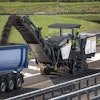
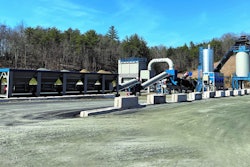
![Img 1791[100]](https://img.forconstructionpros.com/files/base/acbm/fcp/image/2022/09/IMG_1791_100_.632c76e4ca400.png?auto=format%2Ccompress&fit=crop&h=167&q=70&w=250)
